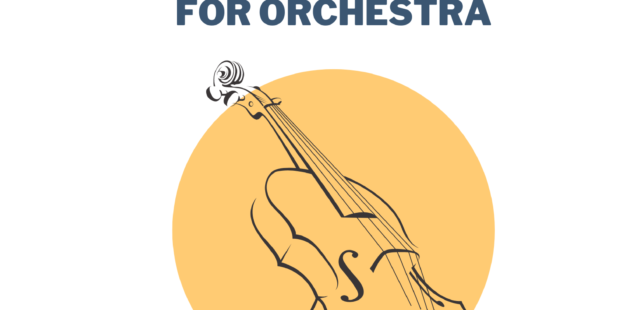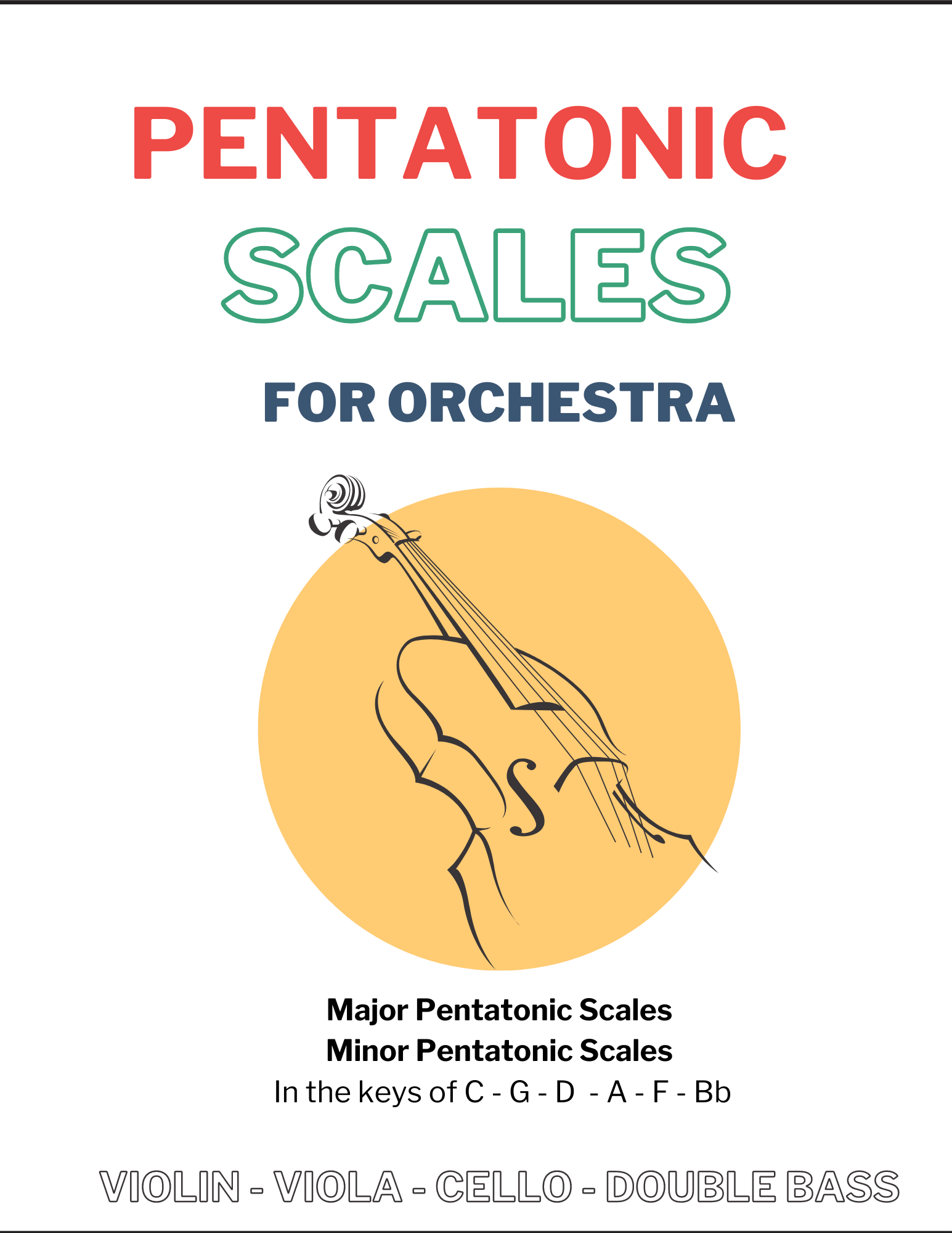
Get Your Students To Learn Pentatonic Scales!
Pentatonic scales are fun and can unlock so much creativity and expression for students. The sounds of pentatonic scales are so familiar and accessible to our ears. Every note sounds good!
My goal is for my students to learn nine major scales (C major plus up to 4 sharps and 4 flats ) and their relative minor scales throughout their 6th, 7th, and 8th grade years.
This year I’ve also been working on pentatonic scales with my students and it’s been really fun creating opportunities for them to improvise using the scales we are practicing in class.
It has been so fun and we are building technique while also being creative! So, get your students to learn pentatonics in addition to their major and minor scales.
What Are Pentatonic Scales?
Pentatonic scales only have five notes (“penta” meaning “five). There are two types of pentatonic scales: major pentatonic and minor pentatonic.
The major pentatonic scale is created by taking the first, second, third, fifth, and sixth scale degrees of a major scale. So, in the key of C, we would have the notes C, D, E, G, and A that form our C major pentatonic.

The minor pentatonic scale is creating by taking the first, third, fourth, fifth, and seventh notes of a natural minor scale. In this case, for an A minor pentatonic we would play the notes A, C, D, E, and G.

Also notice that the A minor pentatonic shares the same notes as a C major pentatonic. This is because A minor is the relative minor of C major. Making this connection can definitely help your students see the connection between the two scales.
Get Your Students To Learn Pentatonics
The sound of both major and minor pentatonics are so undeniably strong in music. Think about the bassline during the verse the Temptations song, “My Girl.” It’s a straight major pentatonic scale. Or Led Zeppelin's "Whole Lotta Love" which is based off of the sound of minor pentatonic.
Your students will love learning pentatonic scales - it's a sound that can easily resonate with them.
Try this simple idea in your classroom today to incorporate pentatonics into your orchestra.
First, teach your students one of the pentatonic scales - major or minor - in whatever key is comfortable. Practice the scale up and down as a class until everyone feels comfortable with the notes.
Next, once all students feel comfortable with the scale, create a simple groove. It should be just a simple rhythmic accompaniment for them to improvise over. I've found I can eliminate the fear factor with improvisation if I have my students improvise collectively at the same time.
Lastly, tell your students, they can play the scale up and down, mix up notes, use steps and leaps - whatever they want to do - just explore the sound over top of your rhythmic groove. Collective improvisation takes the pressure off of any one person soloing. Everyone plays at the same time and just creates with the scale. This allows them to be creative and use the scales we’ve been practicing in class.
Want A Resource To Help Your Students Explore Pentatonics?
I created the Pentatonic Scales for Orchestra for my students to help them learn some of the most crucial and string friendly pentatonic scales.
In this collection, students will be able to learn and practice both major and minor pentatonic scales.
The scales are written in a variety of useful and applicable keys for any string player including C, G, D, A, E, F, and Bb.
The sound of pentatonic scales is so undeniably strong and embedded in music that these scales will help build strong intonation and finger placement.
As we've discussed above, pentatonic scales are a simple and accessible way for students to jump into improvisation.
Students can practice their improv in a variety of keys and also solo over a vamp or chord progression using their pentatonic scale knowledge.
